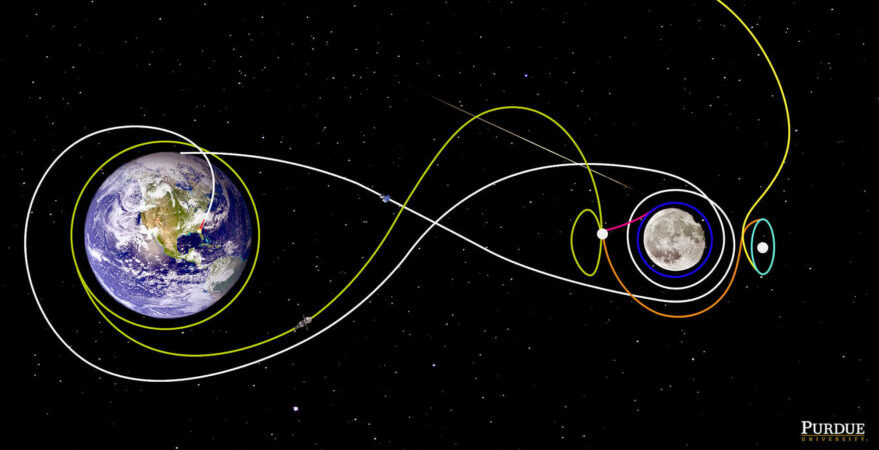
Samuel Lefcourt
- Space systems problem category
- Ground station
- Space vehicle
- Summary
- Rhea Space Activity to develop cislunar space ‘dashboard’ for U.S. Air Force
- U.S. Air Force collaborates with startup Rhea Space Activity (and in turn Purdue University and Saber Astronautics) to tackle the problem of locating and tracking space vehicles in the cislunar space, consisting of the area between Earth and the moon. The company aims to create a dashboard that can provide real-time monitoring of the satellite locations as well as predict their routes.
- The software created must account for the cislunar domain, which differs from the Earth-centric orbits that current technology addresses. The cislunar space does not maintain a trajectory pattern, but rather unique paths. Therefore, there are an infinite amount of plausible actions a satellite can take.
- Thinking strategically, the U.S. military wants this capability to expand it towards the space battlefront in which they can track adversarial spacecrafts with the potential of harming existing satellites. RSA responded by also designing a satellite capable of cislunar and geostationary orbit surveillance.
- Cybersecurity implications
- The biggest issue with creating a centralized monitoring device for U.S. assets is the following: if an adversarial nation state gains access to this information, the assets are now at risk. Adversaries may perform social engineering attacks. I envision a room with a large screen that consistently displays the software with many individuals focused on their assigned target. If a badge is swiped, or employees are identified and subdued, the entire operation is at risk.
- A risk for any company is an insider threat; but this operation holds a heightened risk. If members of the team are identified, adversaries may reach out to incentivize them to leak sensitive information.
- If an adversarial spacecraft wishes to accomplish some goal in cislunar space without the U.S. knowing, a denial of service attack could give it enough time to complete its task. This would take place by interrupting the communication link between the ground station’s software and the space vehicles.
- If RSA successfully creates a surveillance mechanism capable of real-time livestream in the target region, adversarial nation states, hackers, and curious individuals may seek to learn what it sees. This could be accomplished through tapping into the communication link or intercepting the data outright.
- Critical impact
- The area most impacted will be warfare in cislunar space. Currently, there are no means to accurately track or predict trajectories for objects in that area. However, if this capability is developed, means to navigate this area will be researched as well. As such, the space assets existing in the cislunar space will be highly impacted.
